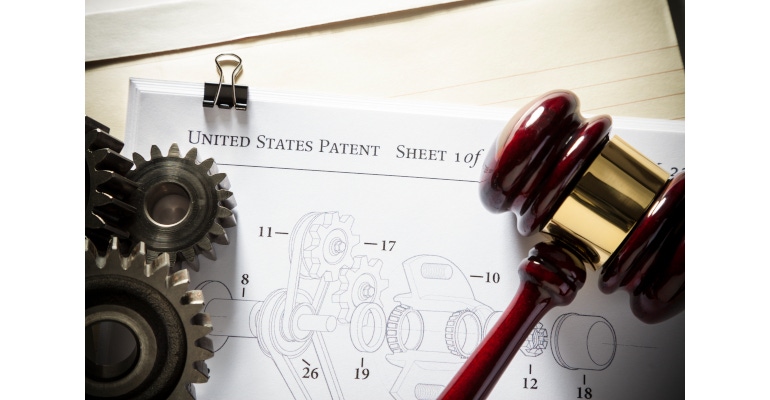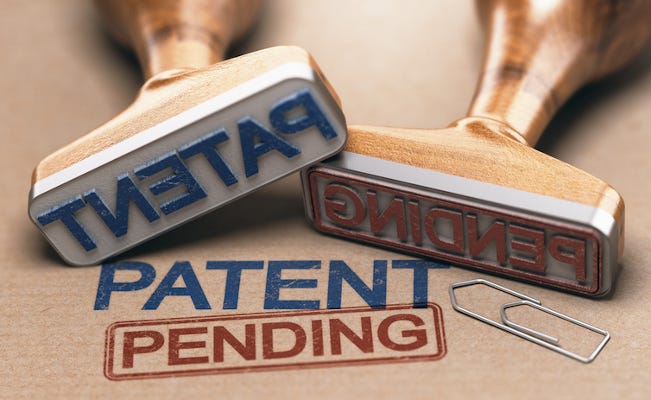What Engineers Need to Know About Filing for Patents
Here's how to prepare a patent disclosure for submission to your manager, to a patent attorney, or for your own patent filing.
March 3, 2023

Sooner or later, most engineers will create or discover something they believe is patentable. But while these technical professionals know that a patent is a collection of rights related to an invention, they don’t always understand how the patent process actually works. This article outlines what you should know when preparing a patent disclosure for submission to your manager, patent attorney, or for your own filing.
What Is a Patent?
A patent disclosure is a description including drawings that explain the uniqueness or significance of the engineered invention. Patents are a social contract between society and the inventor, the former granting the inventor a monopoly, effectively stopping others from using their design for a period of time—typically 20 years. In return, the inventor reveals what they created.
This mutually beneficial exchange dates to the 1700s with Article 1 of the US Constitution, granting congress the ability to make laws to promote science and useful arts (or technology in today’s jargon). The founding fathers were clever in writing that into the Constitution: Intellectual Property Clause, Article I, Section 8, Clause 8, of the United States Constitution grants Congress the power "to promote the progress of science and useful arts, by securing for limited times to authors and inventors the exclusive right to their respective writings and discoveries."
The purpose of the patent system is to provide a social benefit. Instead of inventors keeping their inventions secret for fear of someone stealing their ideas, the goal is to encourage inventors to share their technology with the world. Granted, the system does have its flaws, but by and large, it works.
Companies that employ patent incentives tend to do better. Those with patent incentive programs have higher quality submissions and happier employees, as those who submit patents typically receive cash returns and recognition. This may seem subtle, but remember that fewer companies allow their engineers to write meaningful conference papers.
Patent law poses unforeseen challenges in the world of electronics. While the hardware patent process is well understood, the software version still has challenges. The problem is that courts and juries often don’t understand software. Some of these decisions, like the 2014 US Supreme Court’s Alice Corp. v. CLS Bank International decision about patent eligibility, messed up the world of software patents. The problem stemmed from the court’s struggle with defining a principled way to draw the line between an abstract idea and the application of an abstract idea.
“Treating software as merely an abstract idea, or a kind of mathematics, has become the major way software patents are invalidated in the courts,” explains Jonathan T. Kaplan, Esq., principal IP attorney, Kaplan IP Law. “It also makes software patents harder to obtain in the first place. Inventions that rely on at least some novel hardware, whether electronic, optical, mechanical or something else, are much less likely to be listed as only an abstract idea.”
Others agree that software patents can be more challenging. Harvey Kauget, partner with Burr Forman, notes that software patents are directed to a method only. To increase the chances of patenting a software patent, it is better to tie it to some physical apparatus.
Another challenge in establishing a patent is the current first-to-file (FTF) as opposed to the previous first-to-invent (FTI) laws. FTF has made it more difficult for small companies and individuals seeking to found start-up companies, observes Kaplan. Previously, one could confidently discuss an invention with potential investors because FTI provided a solid one-year grace period. The grace period still survives under FTF, but it is riskier.
The result is that the FTF requirement increases the urgency to file to obtain patent rights since you can no longer claim priority by establishing an earlier date of conception.
Engineers and Patents
Many tech companies discourage their engineers from publishing at conferences to prevent litigation by patent trolls or other non-practicing entities that obtain patent rights to profit from licensing litigation instead of product development. For companies that allow engineers to publish conference papers, such presentations must align with the company’s current strategic goals regardless of the critical technical aspects of the proposed paper.
Patents have become a way for engineers to achieve the same publicity and recognition as conference papers—plus, there may be financial benefits.
“Helping engineers submit patents is a good thing for companies that value patents as a part of their business strategy,” explains Kaplan. “If the company has plaques of its patents displayed in its main lobby, for example, that is a good indicator that the company has a history of asserting its patents in court or using them for licensing revenue.”
The result is that patents are the only way many engineers can get outside recognition and publicize their breakthroughs and improvements.
How Do You File a Patent?
The US Patent and Trademark Office (USPTO) describes the patent-filing patent-filing process in these steps:
Step 1: Determine the type of Intellectual Property protection you need. To protect your invention, you may need a patent, trademark, copyright, marketing plan, trade secrets, or some combination.
Step 2: Determine if your invention is patentable. To determine if you can patent your design, you will need to know the answers to a few simple questions. Who can apply for a patent? What can and cannot be patented? And similar questions. You must also search to see if your inventions have already been publicly disclosed.
Step 3: What kind of patent do you need? There are three types of patents: Utility, Design, and Plant. Most engineers will file for a Design Patent.
Step 4: Get ready to apply. Once you have determined the type of patent you need, you can consider your application strategy and whether to use professional legal services. It may be best to hire a patent attorney, someone very familiar with the peculiarities of the process.
Step 5: Prepare and submit your initial application. Some guidelines list the detailed legal requirements for submitting a patent.
Step 6: Work with your examiner. If your application is incomplete, you will be notified of the deficiencies by an official letter from the USPTO and given a period to complete the application filing.
Step 7: Receive your approval. If the examiner determines that your application is in satisfactory condition and meets the requirements, you will receive a Notice of Allowance, which lists the various fees you must pay.

Is It Worth Filing for a Patent?
Patenting your invention typically takes a lot of work, and engineers may benefit from hiring a patent attorney to navigate the time-consuming and often complex process. While patents will gain the inventor notoriety and perhaps even some income, the reality is that most patents are worthless because the claims within the patents are too narrowly defined, they are easy workarounds, or they are undetectable. Experienced patent attorneys estimate that there are two to three real gems out of every 100 patent submissions.
Companies and universities file for many patents to increase the odds of having that handful of patents that eventually bring in millions of dollars. It’s important to remember that the most prolific inventor, Thomas Edison, had hundreds of patents, but only a few led to valuable and profitable inventions.
One way for companies to gather as many patents as possible is to offer patent incentives. It’s not uncommon for engineers to be offered $1000 for each patent filing award and another $1000 issue award. Sometimes there is “profit sharing” if the patent is in high-volume production. Patents are also crucial for promotions and impressing one’s colleagues.
Universities have different reasons to file for patents. While patents may rank below scientific papers in academic value, the former can serve as a measure of the impact of research and how the research was licensed to the industry. This is important to show your sponsors—often the government—how much society can benefit from your research and thus the necessity continuing to fund your work.
Universities encourage startups to demonstrate the direct impact of taxpayer money for research. Patents are vital to protecting the research at the vulnerable startup stage.
Also, university professors are encouraged to improve their income and patent generation with consulting. Consulting activities naturally result in patents. For foreign high-tech professors, patents provide another advantage. The US Immigration office counts the issued patents when determining “Outstanding Researcher” visas for visa renewals.
In conclusion, engineers in large companies and universities benefit from filing for patents. For the former, patents can provide extra employee income, promotions, peer recognition, and external publicity. A side benefit is that these patent holders will be relatively isolated from the expensive litigation battles between big companies.
For university grad students, patents distinguish you from your peers on CVs and resumes. They help with consulting work and are necessary for startups. Further, technical experts are paid top dollar to assist attorneys during patent litigation.
About the Author(s)
You May Also Like





